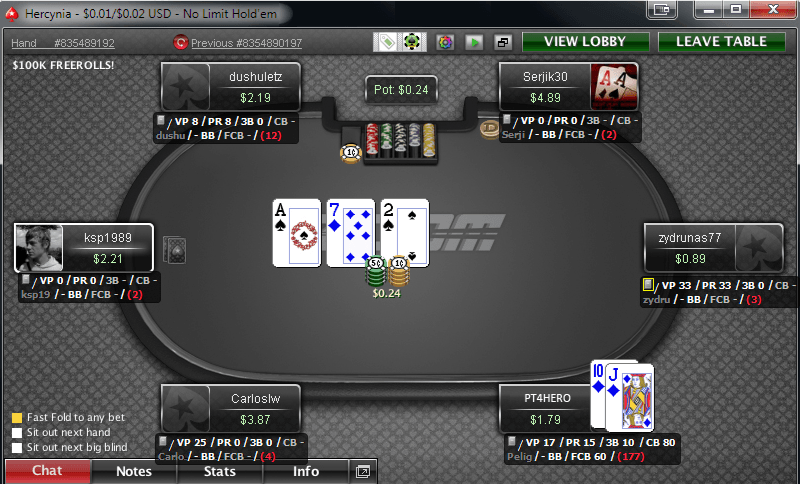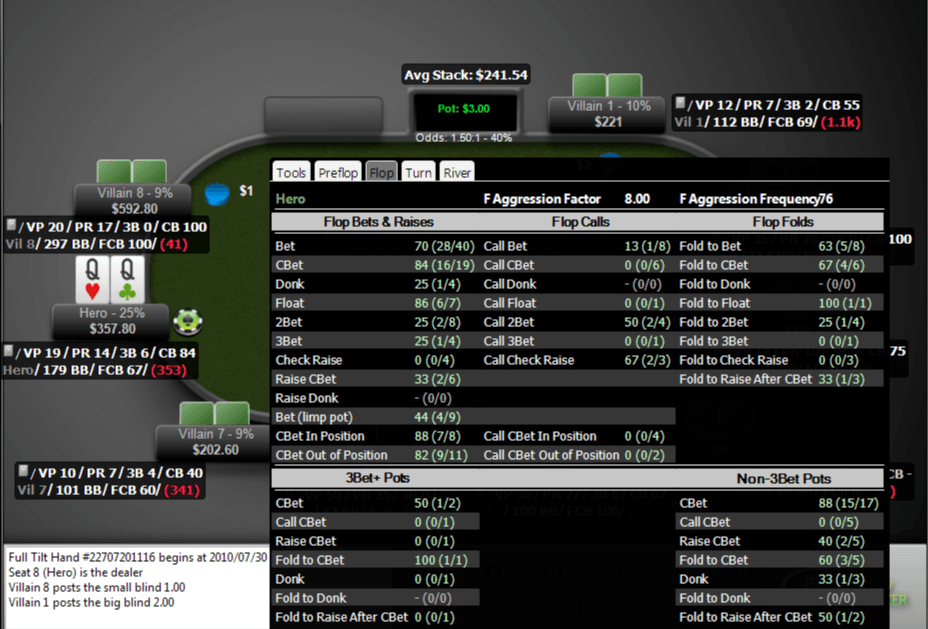10 Crucial Poker Stats Every Player Should Master

Understanding poker statistics isn't just for online grinders or serious professionals-it's the secret weapon of every successful player. Whether you're seated at a live table or multitabling online, leveraging core poker stats can give you a powerful edge, allowing you to read opponents more accurately and adjust your tactics for maximum ROI.
While online poker platforms and tracking software allow for deep data analysis, keen observation at the live felt can reveal similar tendencies. This guide breaks down the ten most impactful poker stats-what they mean, how to interpret them, and how to use them to outplay your competition.
Table of Contents
- Voluntary Pot Entry (VPIP)
- Raise First In (RFI)
- Three-Bet Frequency (3bet)
- Fold Versus 3bet
- Fold to Steal Attempt
- Continuation Bet Frequency (C-bet)
- Fold to C-bet
- Showdown Percentage
- Aggressive Play by Street
- River Call Tendencies
VPIP: How Often Players Put Money in the Pot Voluntarily
VPIP, or "Voluntarily Put $ In Pot," reveals how frequently a player enters a hand by choice (raising, calling, or even limping). Forced bets like big blinds don’t count. A high VPIP indicates a wide range, often signaling a recreational player eager to see flops. Conversely, tighter players show a low VPIP and play fewer, stronger hands.
Identifying players with inflated VPIP allows you to adjust your strategy-target their wide ranges and value-bet more often, knowing they’re playing with weaker holdings.
RFI: Determining Aggressive Openers
The Raise First In (RFI) stat tracks how often a player chooses to open the betting preflop after action folds to them. Strong players often have similar VPIP and RFI figures, consistently raising rather than just limping or calling. A significant gap between these numbers often highlights passive opponents-those more likely to limp in or call rather than take the initiative.
Facing such players, you can confidently apply pressure, since they’re less likely to fight back aggressively.
Three-Bet Frequency: Measuring Preflop Aggression
Three-bet (3bet) frequency captures how often a player re-raises after someone else opens the action. Higher 3bet stats indicate aggression and willingness to battle for pots. Against these opponents, avoid flat-calling with marginal hands and consider mixing in strong hands and occasional well-timed 4-bets with bluffs to stay unpredictable.
Passive players with low 3bet stats rarely re-raise, so their aggression is a strong sign of strength.
Fold to 3bet: Evaluating Resistance to Re-raises
This statistic shows how frequently players fold when they face a three-bet after raising preflop. Opponents who fold excessively to 3bets can be exploited by expanding your bluffing range and three-betting lighter. Conversely, if someone consistently calls 3bets with a wide range, tighten up and use your strongest hands to punish their mistakes.
Tracking this stat helps you tailor your aggression preflop and identify profitable opponents to target.
Fold to Steal: Targeting the Blinds
Understanding how often players in the blinds fold to a late-position steal attempt can shape your opening strategy from the cutoff and button. If the big blind surrenders frequently, you can increase your raising range or even attack with every hand when they're especially passive.
If the blinds fight back with frequent 3bets, however, switch gears-tighten your opening range and avoid marginal spots.
C-bet Frequency: How Often Players Continue Betting
Continuation betting (C-bet) occurs when the preflop raiser bets again on the flop. Analyzing how often players take this aggressive line helps you predict their range and counter their tendencies. Regularly high C-bet frequencies may indicate players who barrel flops automatically-making them vulnerable to check-raises and float plays.
Consider balancing your own strategy by not C-betting 100% of the time. Mix in checks with medium-value hands to protect your checking range and stay less predictable.
Fold to C-bet: Spotting Easy Marks on the Flop
The fold to C-bet stat reveals how frequently opponents fold to continuation bets after missing the flop. Players who fold too readily are ideal targets-simply fire a C-bet with most of your hands, whether you connect with the board or not. Alternatively, against sticky opponents who won't go away without a strong reason, narrow your bluffing range and bet only when you have decent equity.
Continually observe and adjust-consistent exploitative play yields long-term rewards.
Showdown Percentage: How Often Players See the River and Beyond
Went to showdown measures the proportion of hands in which someone sticks around all the way to the end after the flop is dealt. Players with high showdown percentages (over 35%) are unlikely to fold post-flop with any piece of the board, making them terrible bluff targets. Instead, focus on getting value from marginal hands.
Conversely, players who rarely go to showdown often release their hands without strong holdings-so try more bluffs on them, both online and live.
Aggression Percentage by Street: Reading Their Playing Style
Breaking down aggression across the flop, turn, and river (commonly displayed as Agg% by street) illuminates when opponents are most likely to bet or raise versus check or call. Many players show aggression on the flop but become passive on the turn or river, revealing key opportunities to bet for value or take down pots with well-timed bluffs.
Identifying aggressive players lets you trap them with strong hands, while passive ones may allow you to dictate the action through calculated aggression.
River Call Efficiency: Judging Downstream Decisions
River call statistics indicate how often opponents call on the river with losing hands. Players who consistently call but rarely win are paying off value bets too lightly-an easy mark for extra profit. If someone has a river call efficiency below 1, focus on value betting thinner and avoid fancy bluffs-they’re likely to pay you off but won’t fold second-best hands easily.
Integrating Poker Stats Into Your Strategy
Whether you're using an online heads-up display or honing your perception at a live table, developing awareness of these ten statistics can fundamentally transform your results. Online tools such as PokerTracker and Hold'em Manager present these stats at a glance and should always be referenced while playing.

Even in a live setting, careful observation can replicate much of this data. Watch for who plays many hands, who avoids confrontation, and who can't resist calling you down on the river. With this knowledge, you'll be able to exploit your opponents and patch up leaks in your own game.
For more advice on improving your play, explore resources on avoiding common poker mistakes, recognizing cheating techniques, or check out comprehensive poker cheat sheets.
Lead image credit: PokerTracker













